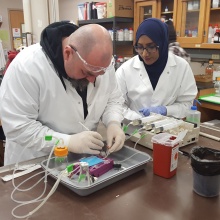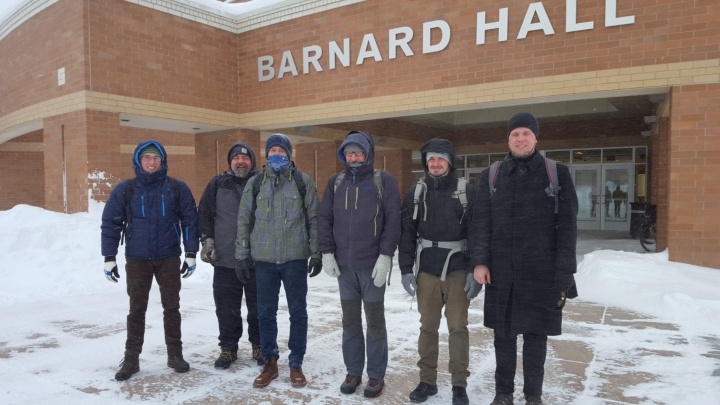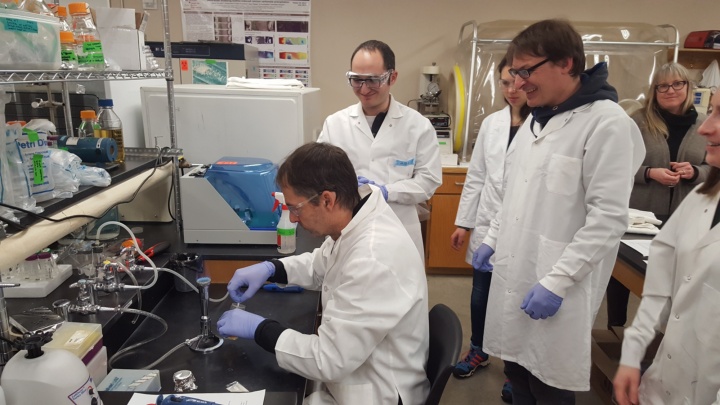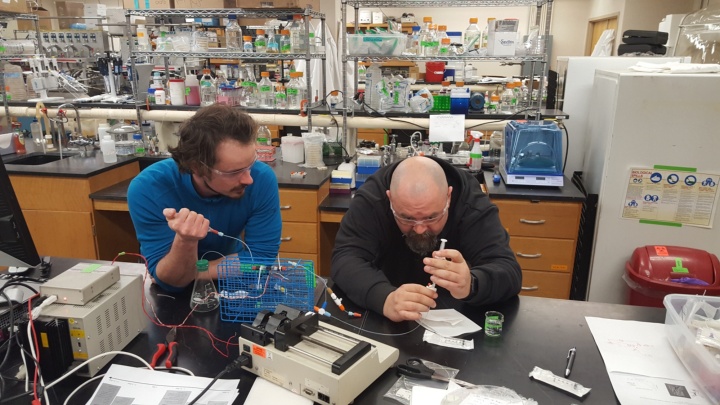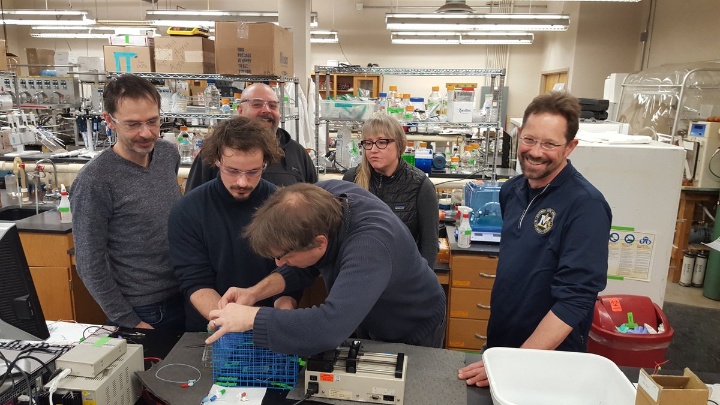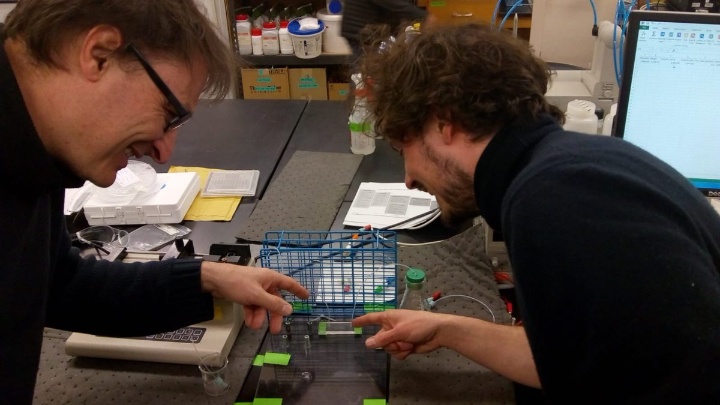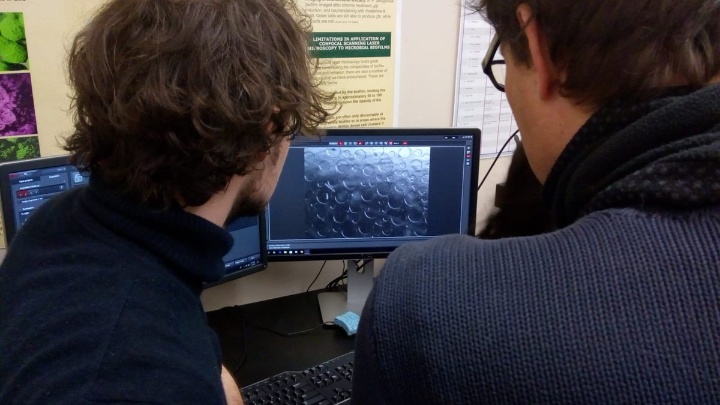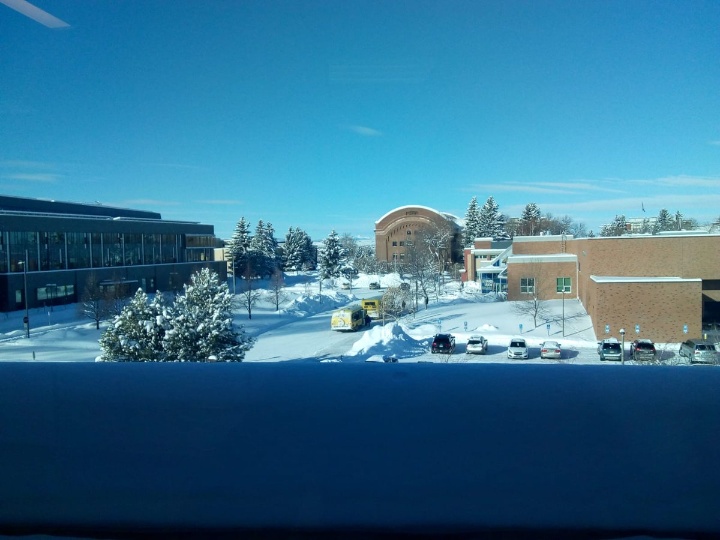Our SFB 1313 researchers went off to Bozeman (USA) to the Montana State University to attend a biofilm workshop at the Center for Biofilm Engineering (CBE) from February 25 to March 1, 2019. The collaboration between CBE and the University of Stuttgart (LH2 and SFB 1313) is existing for over 20 years as well as the joint research interests in biofilm research.
The delegation consisted of Holger Steeb and Nikolaos K. Karadimitriou (research project B05), Holger Class, Johannes Hommel, and Felix Weinhardt (research project C04) as well as Joseph Piotrowski (research project C05). During a whole week, they discovered how the American colleagues are growing biofilm in experimental systems and how they work with it. As the CBE has special facilities to study biofilm, our SFB 1313 researchers were particularly interested in how the CBE deals with microbial processes and how their knowledge could be integrated in the current and future biofilm research at the University of Stuttgart and – especially – within SFB 1313’s research projects related to biofilm and fracture propagation in porous media.
Biofilm workshop at MSU
Our researchers brought their own microfluidic flow cells to the workshop in die U.S. These cells are translucent for microscopic work. The aim of the workshop was to understand and to practice the workflow, which shall be established in the future at the University of Stuttgart.
Workflow of the experimental biofilm investigation
- Step 1: Purchase of frozen bacteria stock / generation of own bacteria cultures that are able to precipitate clacite
- Step 2: Thawing and activating frozen stock (approx. one day)
- Step 3: Growth of several new generations of these bacteria in liquid cultures: the cell cultures are fed with brain-heart infusion with urea as substrate for rapid growth.
- Step 4: Injection of bacteria into the microfluidic cell and waiting for attachment to occur
- Step 5: Feeding of bacteria with nutrient broth for growth
- Step 6: Injection of mineralization medium containing equimolar urea and calcium
- Step 7: Result: calcite precipitation by bacteria
What is to be investigated in the biofilm experiments?
- Porosity-permeability relation: this is for example relevant concerning flow paths in the natural subsurface, that can be sealed temporally by biofilm. The calcite precipitation though seals more permanently.
- How does the biofilm influence the porosity-permeability relation?
- How does the precipitated calcite influence the porosity-permeability relation?
- The bacteria in the biofilm produce an enzyme called „urease“, that changes the pH value by hydrolysing the added urea.
- How does the distribution of biofilm (and thus enzyme) influence the distribution of precipitated calcite?


